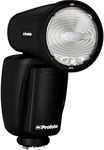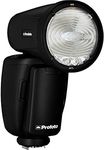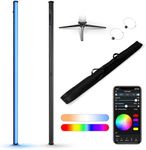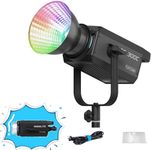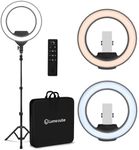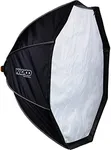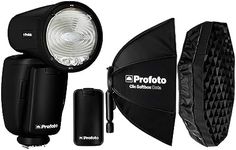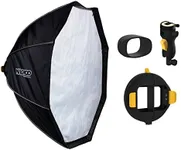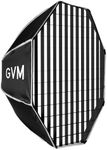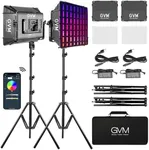Buying Guide for the Best Photography Light
Choosing the right photography light is crucial for capturing high-quality images. The right lighting can make a significant difference in the clarity, color, and overall appeal of your photos. When selecting a photography light, consider the type of photography you do, the environment you'll be shooting in, and the specific features that will best suit your needs. Here are some key specifications to consider when choosing a photography light.Light TypeThe type of light you choose can greatly affect your photography. There are continuous lights, which provide a constant light source, and strobe lights, which flash a burst of light. Continuous lights are great for beginners and for video work because you can see how the light affects your subject in real-time. Strobe lights are more powerful and are often used in professional photography for their ability to freeze motion and provide a high-intensity light. Choose continuous lights if you need a constant light source and are working in a controlled environment. Opt for strobe lights if you need powerful bursts of light and are working in fast-paced or dynamic settings.
Color TemperatureColor temperature is measured in Kelvin (K) and indicates the color of the light produced. Lower Kelvin values (around 3200K) produce a warm, yellowish light, while higher values (around 5600K) produce a cool, bluish light. The color temperature you choose will depend on the mood you want to create and the natural lighting conditions. For indoor photography, a warmer light can create a cozy atmosphere, while a cooler light is often used to mimic daylight. Consider the environment and the effect you want to achieve when selecting the color temperature.
Brightness/Power OutputBrightness or power output is usually measured in lumens or watts and determines how much light the unit can produce. Higher brightness levels are useful for larger spaces or when you need to light up a subject from a distance. Lower brightness levels are suitable for smaller spaces or when you need softer, more controlled lighting. Think about the size of your shooting area and the distance between your light source and subject to determine the appropriate brightness level.
Light ModifiersLight modifiers such as softboxes, umbrellas, and diffusers help shape and soften the light. Softboxes create a soft, even light that reduces harsh shadows, making them ideal for portrait photography. Umbrellas can spread light over a larger area and are great for group shots or larger scenes. Diffusers soften the light and reduce glare, making them useful for close-up shots. Consider the type of photography you do and the effect you want to achieve when choosing light modifiers.
PortabilityPortability is an important factor if you need to move your lighting setup frequently or shoot in different locations. Portable lights are typically lighter and more compact, making them easier to transport. Some portable lights also come with battery options, allowing you to use them without needing a power outlet. If you often shoot on location or need a flexible setup, look for lights that are easy to carry and set up.
AdjustabilityAdjustability refers to the ability to change the light's intensity, angle, and direction. Adjustable lights give you more control over how the light falls on your subject, allowing you to create different effects and moods. Look for lights with dimmable options and adjustable mounts or stands. If you need precise control over your lighting, choose lights that offer a high degree of adjustability.
